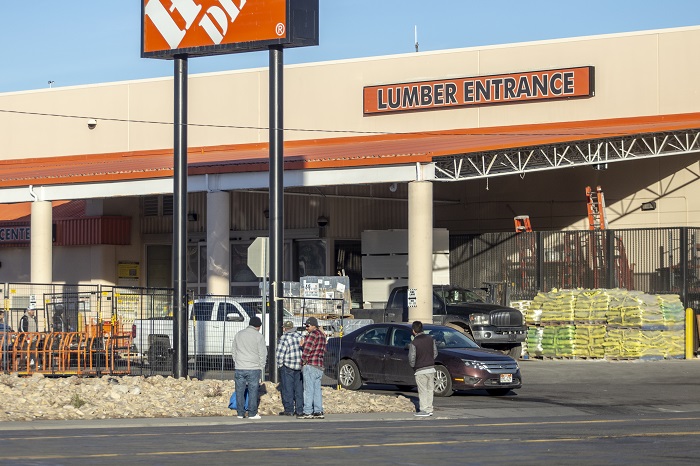
Is America running out of workers? According to a December 13, 2018 report by The Conference Board—a nonprofit organization dedicated to researching and addressing looming business issues—2019 may be a historically tight year in the labor market. This will be especially true in blue-collar industries like mining, manufacturing, maintenance, agriculture, and others that don’t require a bachelor’s degree.
In the short term, this means many of these industries are raising wages, relocating to areas with a larger labor pool, and expanding their recruiting efforts. As a result, The Conference Board says those workers who do choose these industries are “much more likely to have a job they are satisfied with and experience rapid wage growth.” On the other hand, employers must prepare for “more recruitment and retention difficulties in the next decade as there are few entrants and many exits out of the blue-collar and low-pay services workforce.” The Conference Board explains that many companies may choose to invest in automation, rather than spend the extra money to attract a shrinking workforce.
I spoke with Caroline Sinquefield, the manager of the Salt Lake branch of ResourceMFG about how she sees this labor shortage playing out in Utah. As the largest manufacturing specialty staffing company in the nation, ResourceMFG is uniquely positioned to observe this trend on the front lines.
The Problem
Sinquefield and her team work directly with Utah manufacturing companies to fill open positions from entry-level to skilled production and even HR/admin. When I asked if the nationwide labor shortage was reflected in Utah companies, Sinquefield didn’t hesitate to confirm. She explained, “There is no shelf life in regard to placing people. Before, when jobs weren’t as hard to fill, we could get the needs met quicker. Now it’s to the point that everything is under pressure.” Simply put, there are fewer applicants and more job openings.
This problem is especially evident in positions that require certain skills. Sinquefield explained, “There is this big skills gap in the manufacturing industry. The ones that have skills like maintenance or injection molding have employees who are starting to retire out, and there is no one with that skill that can jump in and take it.” However, these positions aren’t the only ones going unfilled. When I asked which specific areas and positions were facing shortages, Sinquefield simply said, “Every skill. Every position.”
This atmosphere does give employees options and negotiating power. Sinquefield said, “Many of the good employees are currently working, so you have to entice them to leave that company. And even if it doesn’t work out, associates know that they can get another job. It’s completely reversed from where it was ten years ago when you had people fighting to get a job. Now it is companies fighting to get employees.”
Many companies are raising wages to attract the dwindling labor force. But this, Sinquefield explains, is a short-term solution at best. As raises cut into profits, employers still run the risk of losing their workforce to Amazon or the next higher-paying company that comes along. The inability to fill positions also keeps companies from achieving the growth they otherwise could.
Some companies are looking to automation to fill the gap. But while replacing production workers with robots may offer a more long-term solution for manufacturing companies, it doesn’t necessarily eliminate the need for an immediate increase in the labor pool. Sinquefield explained, “I think for long term, automation makes a lot of sense in manufacturing. But you have to have a short-term solution. You have to have the product out before you can financially support bringing in a piece of equipment.”
The Solution?
Sinquefield is the first to admit that this is not an easy problem to solve, especially since “It’s probably going to get worse before it gets better.” But ResourceMFG is working to mitigate the problem. Sinquefield and her team do wage analysis every quarter and offer management advice to help client companies be competitive.
For prospective employees, ResourceMFG offers free online education once they complete their first 80 hours of work. In an effort to expand their dwindling pool of applicants, they also work with refugee centers to help first-generation residents learn in-demand skills and fill positions.
While these services and benefits may make ResourceMFG a more attractive option for workers and companies to find each other, they don’t solve some of the larger social issues behind the labor shortage. There are groups of people who could fill these positions if they could overcome hurdles like addiction problems or lacking two valid forms of ID.
Sinquefield has personally gone to her local representatives to push for more public transportation to high-volume manufacturing areas. She explained, “For manufacturing, the shifts start really early and end really late. So it eliminates more of the already small pool of people who are looking for work.” She remains frustrated with UTA priorities when it comes to putting in new routes: “They’re putting lines in Sugar House, which is great to a point, but we really need lines out on the west side, where we have thousands of people going out to work.”
For now, Sinquefield and her team are working on those issues they can control, like mentoring companies through the new playing field and getting prospective employees the training they need to be successful. But at the end of the day, Resource MFG needs more people walking in the door. So if you or anyone you know is looking for work, the “now hiring” sign is always on.




